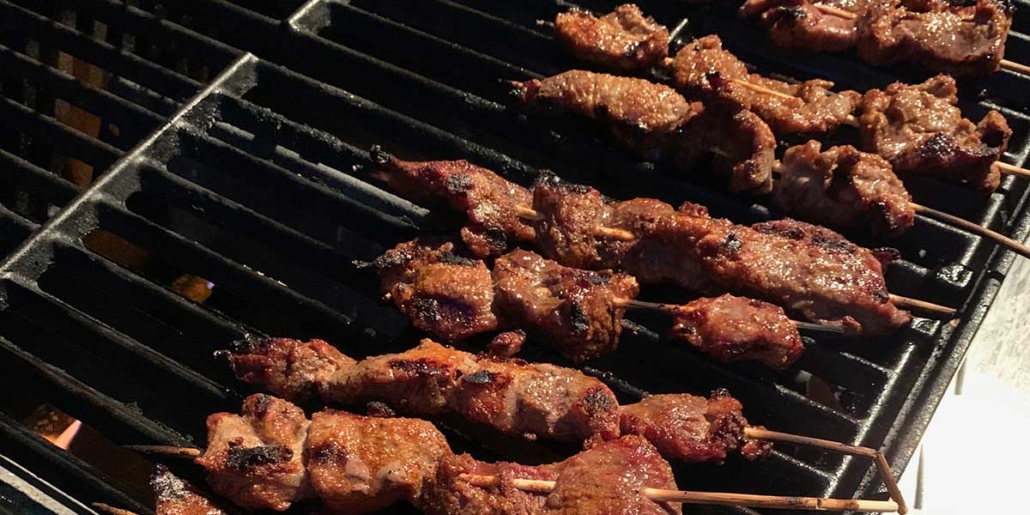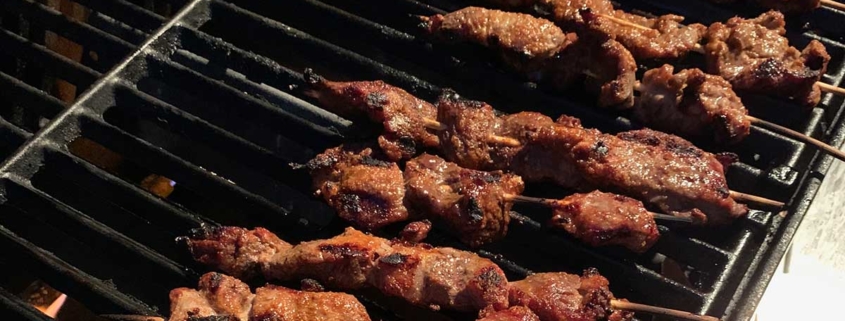Making Cameroonian Soya
When I was in Cameroon during college for an anthropology field school, one of our favorite things was going to the market and getting soya (or suya if you’re in Nigeria) from the street vendors. Originally making its way through sub-Saharan Africa thanks to the Hausa people, soya is commonly sold in the streets of markets, in villages, and even along roadways where tour buses or bush taxis stop to allow passengers to buy items.
I first had soya on our initial evening in Douala, the country’s principal seaport, where we spent two days. We met up with a professor from the University of Youndé and while sitting outside in a marketplace talking with him, purchased soya from one of the vendors nearby. It was served with a sauce that he repeatedly told us to avoid because it was “very hot.” The sauce, appropriately called “pepper sauce” by Cameroonians is a very common condiment and primarily made with habanero, garlic, onion, basil and other spices. And it is hot. Eventually, I inadvertently swiped some of the soya meat through the sauce and within a few seconds my eyes were watering and my nose running. It’s really good though.
As we made our way to Youndé, the capital of Cameroon, the following day, our bus stopped on the side of a road in a market area and vendors were sticking kabobs of soya meat in through the windows hoping to entice passengers to buy them, which we did. We stayed a few days in Youndé to care for any issues that may require government services, and then made our way to Bamenda where we would spend the next several weeks conducting our research projects.
After an afternoon of interviews and data gathering, a fellow student and I would commonly spend an hour or two at a market having a beer and eating soya. We could get a whole plate of soya for about the equivalent of 25 cents. It was a good chance to decompress, talk about the day’s work, and enjoy tasty food.
I found a few web sites that have recipes for making soya and decided to give it a try. There’s really not much to it — you make a spice rub, coat the thinly cut meat, and then grill it over a fire. I did not take time to make pepper sauce, partially due to time constraints as this was an impulse decision on a weeknight. There was another reason: everything I’ve read warns the reader not to cook peppers in the house with small kids because the fumes will burn their eyes. Recipes I’ve found in the US recommend using vegetable oil, whereas actual pepper sauce in Cameroon uses the more common palm oil. I’d prefer to order that and try making it one day when my wife and the kids are out at a playground for a couple hours.
Soya Recipe
Ingredients for the rub
- .25c ginger
- 1 tsp onion powder
- 1 tsp garlic powder
- 1/2 tsp cayenne pepper
- 1 tsp white pepper
- 1 tbsp paprika
- 1 tsp salt
- 2 Maggie cubes
You can use top sirloin steak or chuck roast to make soya. The key is to cut the meat into thin slices, so I would recommend putting the meat in the freezer for a bit before slicing it, as this will make it much easier. You can use bamboo skewers and soak them in water for a few hours beforehand so they don’t burn up over the direct flame. This was a problem for me and I soaked mine for half an hour, which was obviously not long enough. A few of them charred and broke, which isn’t a big deal, but makes it a little tricker to turn the kabobs and remove them from the grill.
After you mix all the ingredients together, you coat the strips of meat in the rub, skew them, and toss them in the fridge for half an hour. Cooking them on the grill is just a matter of searing them, turning them over and letting the other side cook, and removing them. They’re cut thinly so they don’t take long at all.
Amazing flavor but would have been better with pepper sauce. I’ll do that next time.







